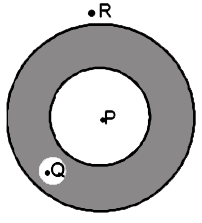Current flows through a metallic conductor whose area of cross-section increases in the direction of the current. If we move in this direction.
the current will change
the carrier density will change
the drift velocity will increase
the drift velocity will decrease
The correct Answer is:D
Step by step video, text & image solution for Current flows through a metallic conductor whose area of cross-section increases in the direction of the current. If we move in this direction. by Physics experts to help you in doubts & scoring excellent marks in Class 12 exams.
Updated on:21/07/2023Topper's Solved these Questions
Similar Questions
Knowledge Check
When a current flows through a conductor its temperature
AMay increase or decreaseBRemains sameCDecreasesDIncreasesWhen a steady current flows through a metal conductor of non-uniform cross-section , then drift velocity is
AIndependent of area of cross-sectionBDirectly proportional to the area of cross-sectionCInversely proportional to the area of cross-sectionDInversely proportional to the square of area of cross-section.
A steady current flows through the conductor of variable cross-sectional area. Now select the correct options.AThe value of current is same through the cross sections 1,2, and 3BThe current density is the maximum at the cross sections 3CThe drift velocity is greater at the cross-section 1DThe electric field is maximum at the cross section 3.
What is the direction of electric current in a metallic conductors?
View SolutionA steady current flows in a metallic conductor of non-uniform cross-section. The quantity/ quantities constant along the length of the conductor is/are
View SolutionA steady current I is set up in a wire whose cross-sectional area decreases in the direction of the flow of the current. Then, as we examine the narrowing region
View SolutionA steady current flows in a metallic conductor of non-uniform cross-section i.e., i : constant. A≠ constant.
View SolutionIf one ampere current flows through a conductor, the number of electrons flowing across the cross section of the conductor in 2 second it _________.
View Solution

